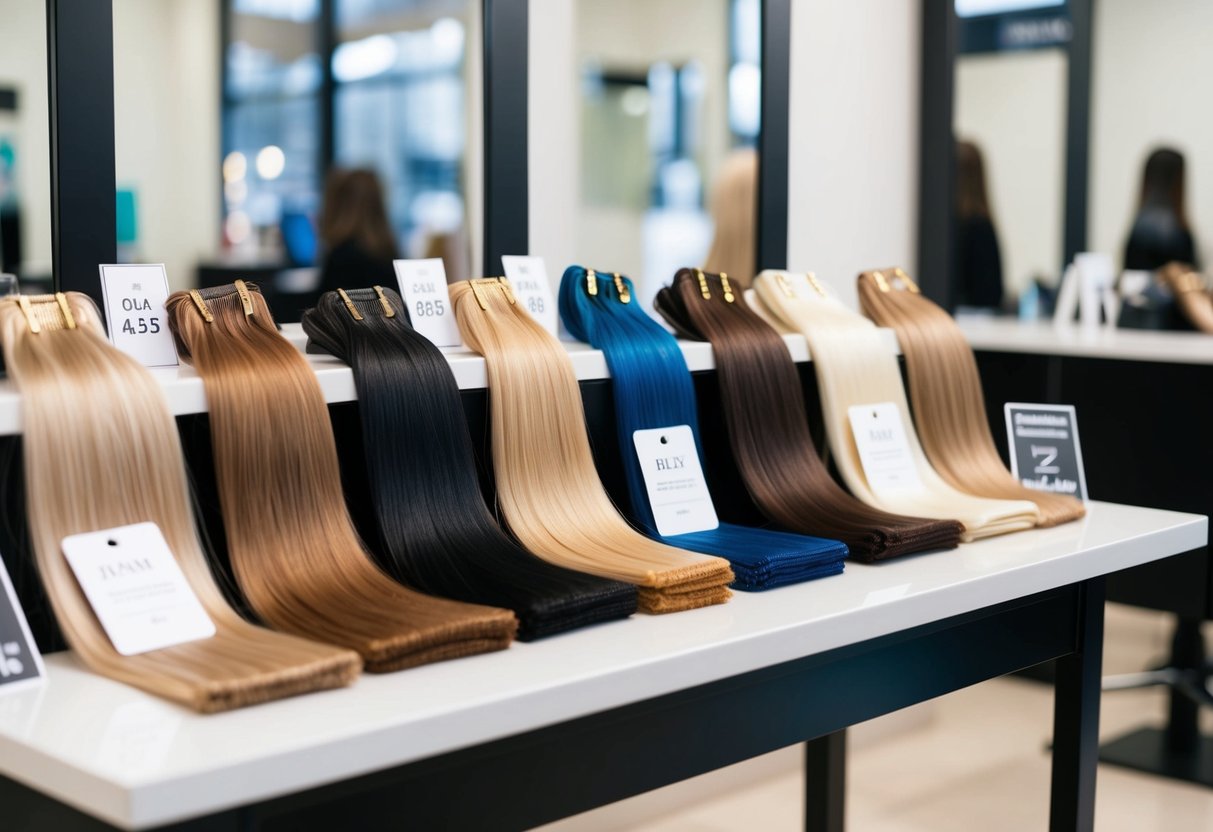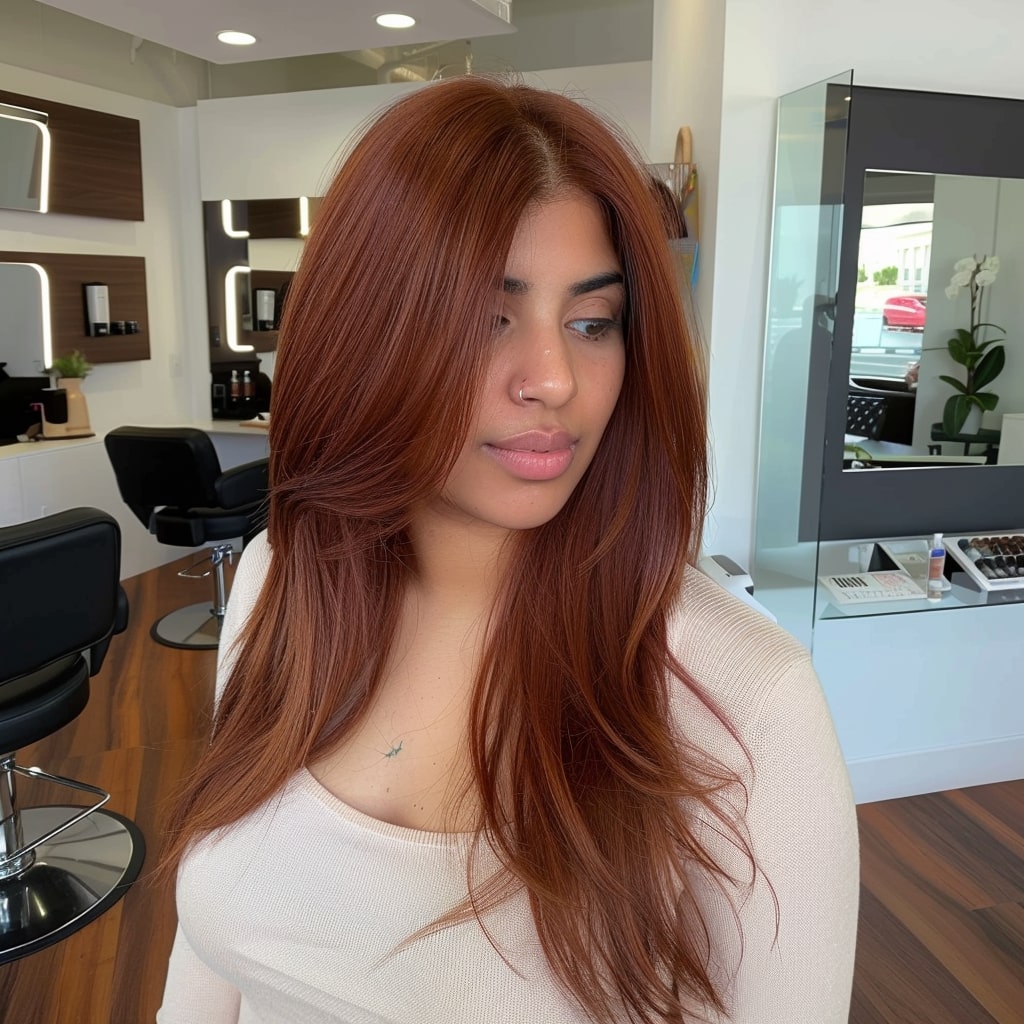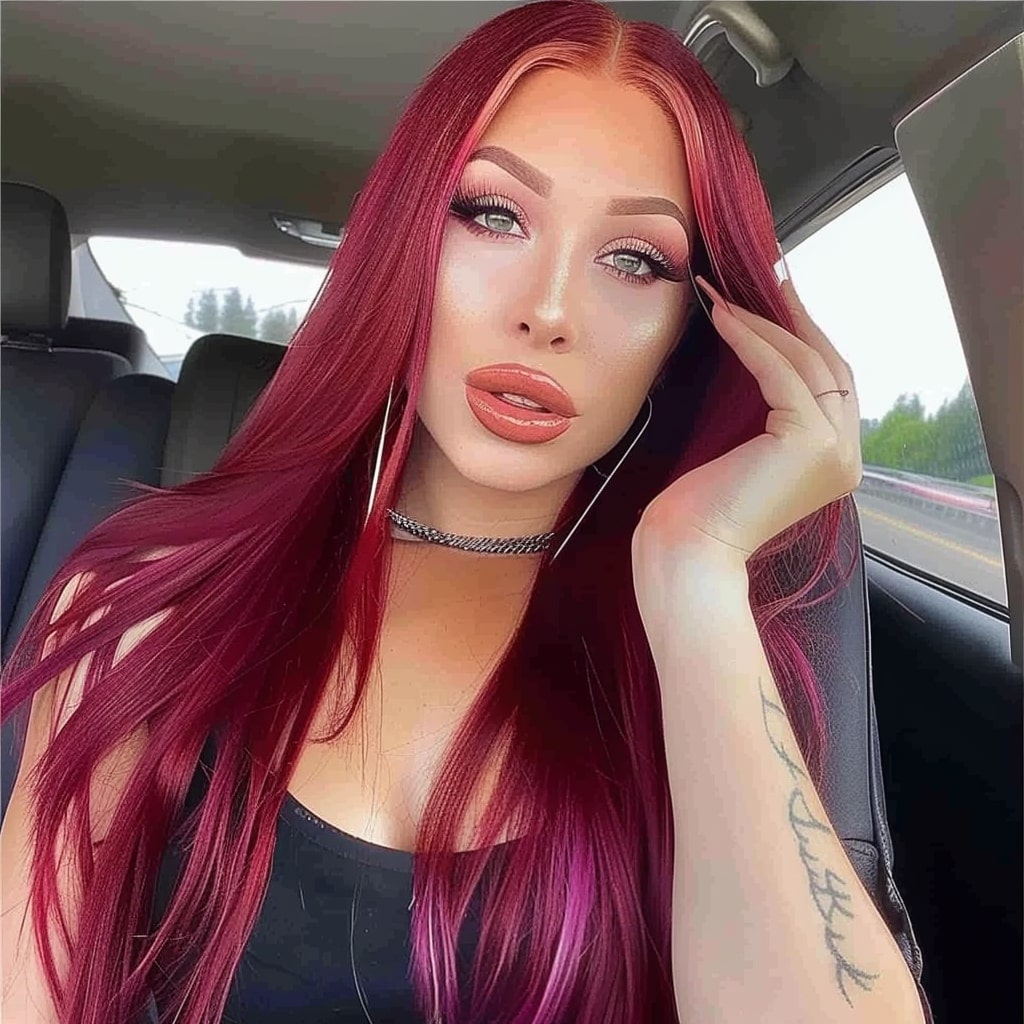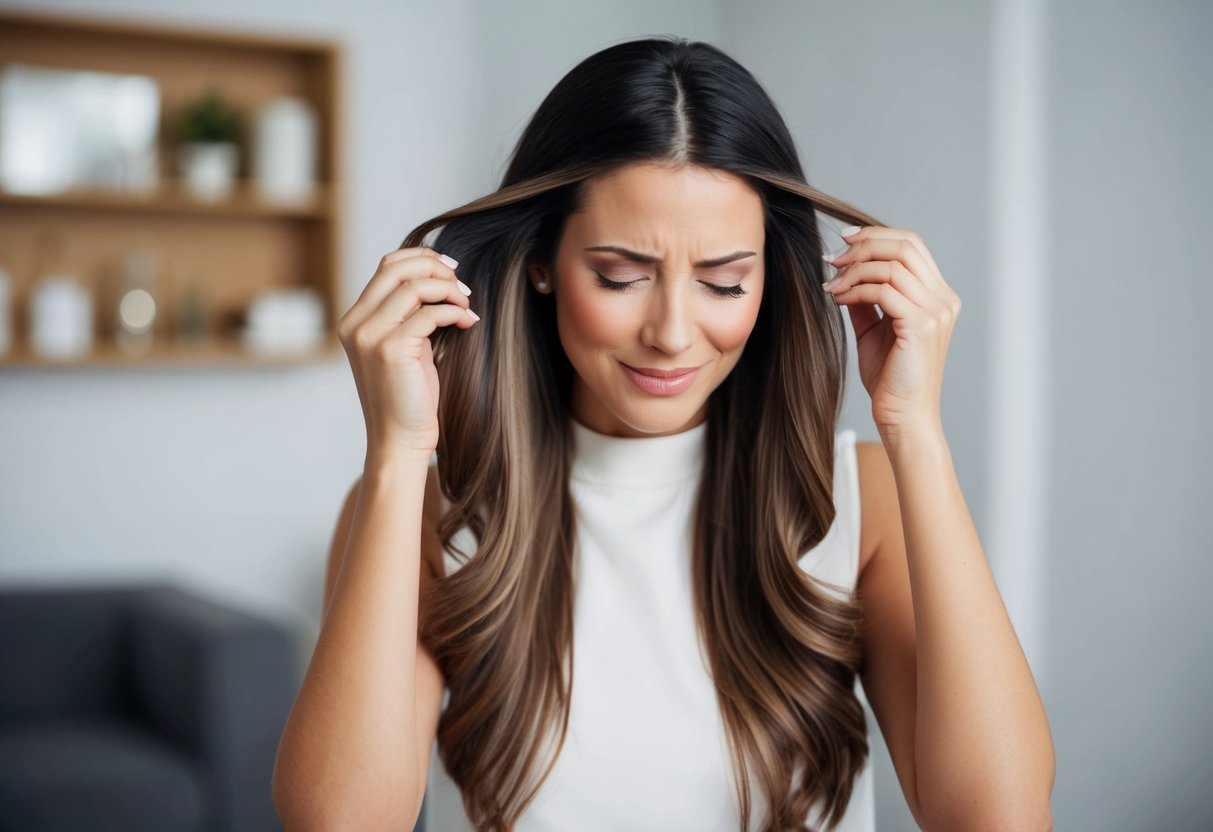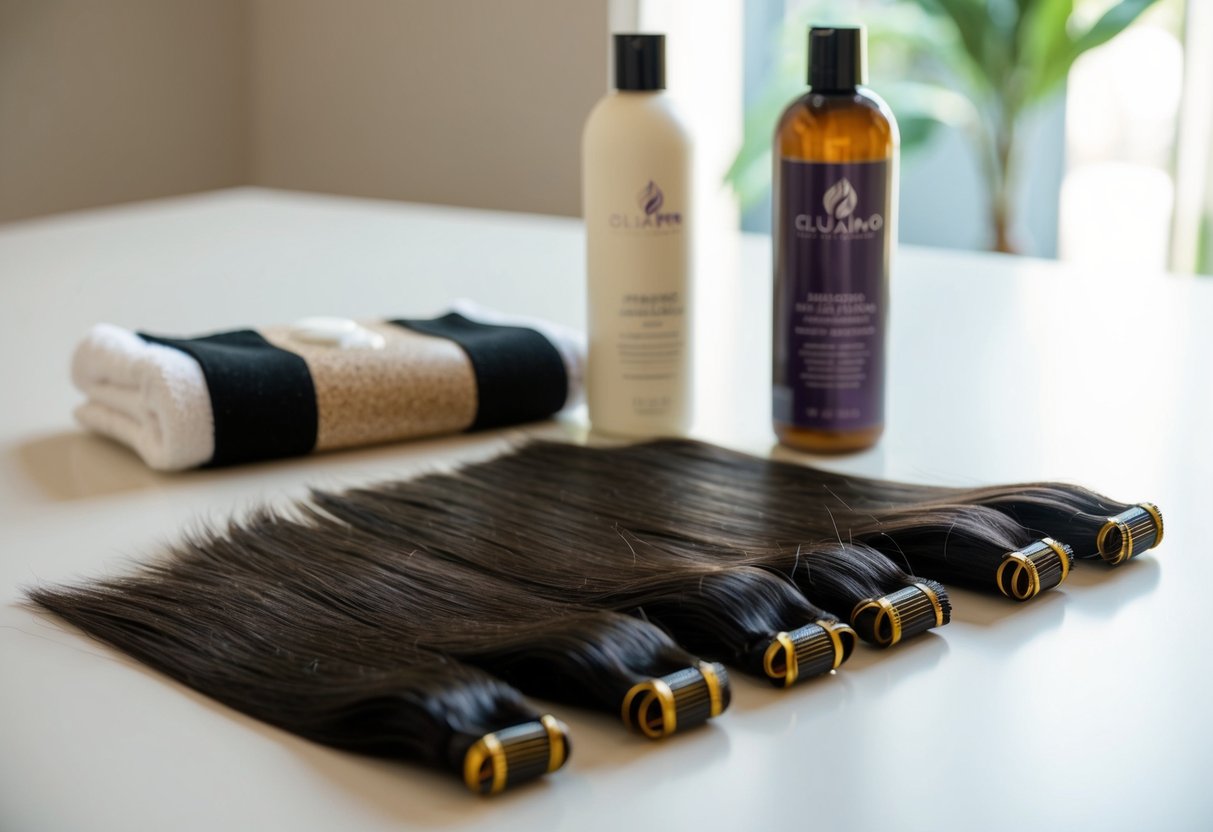Preventing Shedding: Common Causes and Solutions for Hair Extensions Falling Out
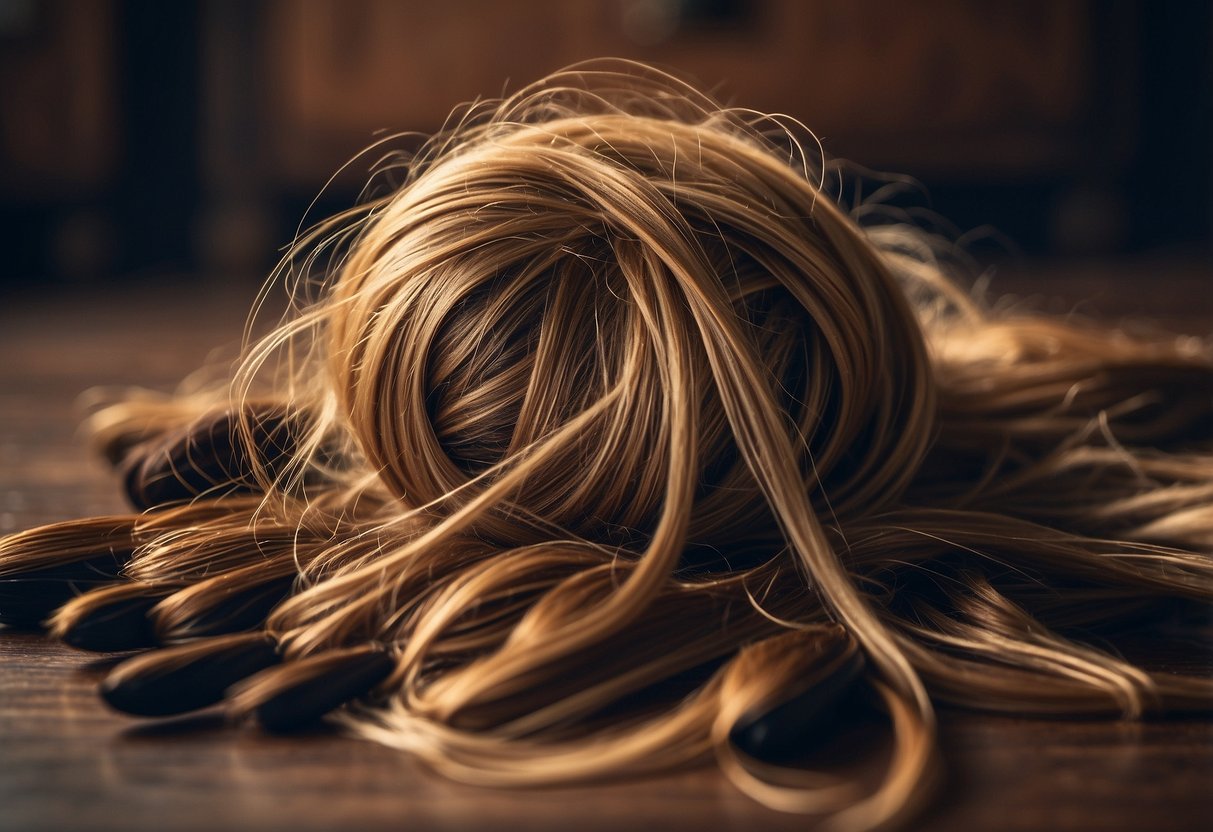
Are your hair extensions constantly slipping or falling out? This frustrating issue can happen for several reasons, and it's important to figure out why to keep your extensions looking beautiful and lasting longer. Improper installation or the use of the wrong products can cause hair extensions to slip out more easily. When extensions aren't installed correctly, or the bonds become loose, they may not stay in place as they should.
Another common reason for hair extensions falling out is aggressive brushing. When you brush your hair without holding the bonds, you can put unnecessary pressure on the extensions, causing them to break or slip out. It's crucial to handle your extensions with care to maintain their integrity and prevent damage.
It's also worth noting that hair extensions can contribute to hair loss if not used properly. Traction alopecia can occur from the constant pulling on the hair follicle, leading to hair loss. Ensuring proper care and maintenance of your natural hair and extensions will help avoid this issue and keep your hair healthy.
Key Takeaways
- Improper installation or wrong products can cause hair extensions to slip.
- Aggressive brushing can lead to extension damage or loss.
- Poor use of extensions may result in traction alopecia.
Understanding Hair Extensions
Hair extensions come in various types and each needs specific care to prevent falling out and potential damage to your natural hair.
Types of Hair Extensions
Hair extensions can significantly change the way you look. There are several types of hair extensions, each with unique features:
Nano Rings: Small and discreet, these extensions use tiny metal rings to attach the extension hair to your natural strands. They are less visible and can be used with fine hair.
Tape-In Extensions: These involve hair strips with adhesive tape on one side. They are quick to apply and lay flat against the head, making them less bulky.
Micro Rings: These extensions are similar to nano rings but use slightly larger rings. They are durable and secure but may sometimes be visible if not properly applied.
Fusion Bonds: These extensions use a keratin bond to fuse the extension hair to your natural hair. They provide a natural look and are long-lasting but require more time for application.
Human Hair: Extensions made from human hair are more natural-looking and versatile, allowing for styling with heat tools. They blend better with your natural hair compared to synthetic options.
The Basics of Hair Extension Care
Proper care is crucial to maintaining the longevity and appearance of your hair extensions:
Brushing: Always hold the bonds when brushing to avoid pulling at your natural hair. Use a soft-bristle brush and be gentle to prevent breakage.
Washing: Use sulfate-free shampoos and conditioners to maintain the health of both your natural hair and extensions. Avoid washing the hair too frequently to prevent the adhesive or bonds from loosening.
Styling: Use heat protectant sprays when using hot tools on human hair extensions. Limit the use of these tools to reduce potential damage.
Maintenance: Regularly visit a professional to check and adjust the extensions. This can prevent issues like slippage or tangling and ensure the extensions remain secure.
Sleeping: Tie your hair in a loose braid or ponytail before sleeping to minimize tangling and stress on the bonds. Use a silk pillowcase to reduce friction and keep your hair smooth.
By understanding the different types and learning how to care for them, you can keep your extensions looking their best.
Causes of Hair Extension Slippage
Hair extensions can slip or fall out for various reasons. These include mistakes during application, the hair's natural texture and condition, the use of certain products and chemicals, and lifestyle factors.
Application Mistakes
Improper application is a leading cause of hair extensions slipping. If the extensions aren't attached correctly, they won't hold as well. For example, not securing the attachment points tightly can cause the extensions to fall out.
Another major mistake is failing to match the extension type with your natural hair. Using the wrong extension for your hair type can make it more likely for the bonds to slip. Ensuring a proper fit and attachment is crucial for longevity.
Hair Texture and Condition
The texture and condition of your natural hair greatly affect how well extensions stay put. Oily scalps, for instance, can make it difficult for the extensions to grip. The oils can break down the adhesives used to keep the extensions in place.
Hair that is thin or damaged may also struggle to hold extensions. Weak hair strands can break under the added weight, leading to slippage. Ensuring your hair is in good condition before adding extensions can mitigate these issues.
Product and Chemical Effects
Certain products and chemicals can weaken the hold of hair extensions. Hair products containing alcohol can break down the adhesive bonds. Avoid using products with alcohol or harsh chemicals near the attachment points.
Chemical treatments like coloring or perming can also make extensions slip. The chemicals in these treatments can affect the bonds, making them less secure. Consult with a stylist to find treatments that are safe to use with your extensions.
Lifestyle Factors
An active lifestyle can also contribute to hair extension slippage. Activities that cause excessive sweating can make the scalp oily, weakening the bond. Swimming, particularly in chlorinated or salty water, can also affect the adhesive.
Daily hair care routines matter, too. Aggressive brushing or pulling at the extensions can loosen them. Gentle care and considering specific maintenance techniques for extensions can help them last longer.
Maintenance Tips for Hair Extensions
Taking good care of your hair extensions ensures they last longer and stay looking beautiful. Focus on mindful brushing, gentle washing, and careful use of heat styling tools to maintain their quality.
Brushing and Detangling
Hold your extensions while brushing to prevent putting stress on both the extensions and your natural hair. Using a wide-toothed comb or a brush specifically designed for extensions can prevent unnecessary pulling.
Brush your hair daily to avoid tangles and knots. Start from the ends and work your way up to the roots. Always be gentle to avoid breaking the bonds.
Divide your hair into sections when brushing. This method makes it easier to manage and ensures you reach all areas without causing damage.
Washing and Conditioning
Use sulfate-free shampoos and conditioners to maintain the integrity of your extensions. Sulfate-free products are milder and help retain moisture.
Apply conditioner from mid-length to ends. Avoid the roots to prevent the bonds from weakening. Opt for a leave-in conditioner to provide extra hydration.
Air-dry your hair when possible. This method minimizes the risk of damage. If you must use a dryer, set it to the lowest heat setting and use a heat protectant spray.
Do not wash your hair too frequently. Over-washing can strip your extensions of their natural oils and cause them to dry out. Washing them 1-2 times a week should suffice.
Heat Styling and Treatment
Minimize the use of heat styling tools like straighteners, curling irons, and blow dryers. If you need to style your hair, always apply a heat protectant before using any tools.
Opt for low-heat settings to reduce the risk of heat damage. High temperatures can weaken the bonds and dry out your extensions.
Consider alternatives to heat styling such as braiding your hair for waves or using hair rollers. These methods can create beautiful styles without causing damage.
For treatment, periodically use a deep conditioning mask tailored for hair extensions to maintain their softness and shine. Regularly applying an oil treatment can also help keep the extensions hydrated and healthy.
Preventing Hair Extension Damage
Preventing damage to hair extensions involves careful application, regular check-ups at the salon, and special care for those with fine or thin hair.
Proper Application Techniques
Proper installation is crucial to avoid breakage and damage. Ensure a professional hair technician applies your extensions. A skilled technician will use the appropriate method for your hair type.
Avoid tight applications as they cause traction alopecia. Traction alopecia is when hair falls out due to stress on the hair follicles.
You should also clean your hair thoroughly before installation. Product buildup can make extensions slip out more easily. Additionally, using quality products during the installation can ensure better support and durability for your extensions.
Routine Check-ups at the Salon
Regular salon visits help maintain the health of your extensions. Scheduling appointments every 4-6 weeks is advisable to detect early signs of damage.
During these check-ups, ask your stylist to adjust or tighten the bonds and check for any issues like slippage or matting. These adjustments can prevent breakage and prolong the life of your extensions.
It's also a good opportunity to discuss any problems you've noticed. A professional can give you specific advice tailored to your hair type.
Special Considerations for Fine and Thin Hair
Fine and thin hair requires extra attention. It is more prone to damage due to the delicate nature of the hair strands. Choose lighter extensions to avoid adding too much weight, which can cause breakage.
Opt for methods that are less damaging, like tape-in extensions, which distribute weight evenly.
Use a soft-bristle brush designed for extensions and gently detangle your hair daily. Avoid aggressive brushing as it can pull out extensions and damage your natural hair.
Finally, consider using products designed to strengthen fine and thin hair, providing additional support and nourishment.
Securing Hair Extensions for Longevity

Properly securing hair extensions ensures they stay in place longer and look natural. Key practices include using the right attachment methods and maintaining good daily and nightly habits.
Effective Hair Extension Methods
Selecting the right extension method is crucial. Tape-in extensions are popular for their seamless blend with natural hair. They are lightweight and less likely to pull on your roots. For a more durable option, keratin bond extensions provide a secure attachment.
Micro-ring or micro-bead extensions are another great method. They use small metal rings to secure extensions without glue or heat, reducing the risk of damage. Ensuring the bonds are checked regularly at the salon can prevent slipping and extend the lifespan of your extensions.
Daily Habits and Night Routines
Daily habits can affect the longevity of your hair extensions. Always use a loop brush designed for extensions, as it helps prevent tangling and breakage. When brushing, hold the roots to avoid putting stress on the bonds. For optimal results, keep your extensions straightened and free of knots.
At night, never sleep with wet hair extensions. Always put your hair into a loose ponytail or braid to minimize tangling and friction. This practice helps in maintaining a natural blend of your extensions and prevents unnecessary stress on the roots. By following these routines, your hair extensions will maintain their beauty and last longer.
Optimizing Hair Extension Lifespan

To keep your hair extensions looking great for as long as possible, it's essential to choose the right products and avoid certain mistakes. Proper care and maintenance play a huge role in ensuring longevity and natural appearance.
Choosing the Right Hair Extension Products
Selecting the correct hair products is crucial. High-quality adhesive and tape adhesive can make a significant difference. Ensure that these products are designed for hair extensions, offering strong hold without damaging your natural hair.
Use a specialized brush to prevent unnecessary pulling on the bonds. Start brushing from the ends, working your way up to reduce tension. Additionally, opting for sulfate-free shampoos and conditioners helps maintain both the softness and the adhesive strength.
Oils can be beneficial but avoid applying them directly on the bonds. Lightweight oils on the ends of the extensions can add shine and manageability without weakening the adhesive.
Avoiding Common Hair Extension Mistakes
There are some common pitfalls to steer clear of. One key mistake is aggressive brushing. Always hold the extensions by the bonds when brushing to avoid excessive pressure on your natural hair.
Sleeping with wet hair extensions is another issue. Ensure your hair is completely dry before bed and tie it in a loose braid or ponytail. This prevents tangling and maintains the integrity of both the extensions and your natural hair.
Also, refrain from using too much heat and chemical treatments. Overuse of hair products and tools can strip the extensions of their natural finish and affect their length and volume.
Avoid exposing your extensions to unnecessary oils and chemicals that can degrade the adhesive quickly. By following these guidelines, you can enjoy beautiful, long-lasting hair extensions.
Signs of Needing Professional Care
Recognizing when to seek professional help for your hair extensions can save you from further damage and ensure the longevity of your hairstyle. Below are specific situations where consulting a professional is crucial.
When to Seek a Professional's Advice
If you experience frequent hair extension slippage, it may indicate improper application or low-quality extensions. Such issues require a professional's intervention to reassess the installation method or quality of the extensions.
Noticeable scalp irritation or pain is another red flag. Persistent discomfort can indicate allergic reactions to the adhesive or incorrect attachment techniques. Seeking professional advice will ensure that your extensions are applied safely and comfortably.
Also, if your natural hair appears significantly more porous or weakened, consult a professional. They can provide treatments to strengthen your hair and offer appropriate extension solutions.
Hair Extension Removal and Reapplication
Removing hair extensions without professional help can damage your natural hair. DIY removal can lead to hair breakage and loss. Professionals use specific products and techniques to gently remove extensions, minimizing harm to your hair.
Once removed, extensions often require proper cleaning and reapplication. Professionals ensure that extensions are reattached correctly, preventing future slippage and breakage. They also assess the condition of your natural hair and provide necessary treatments before reapplying extensions.
Regular maintenance at a salon ensures the health of both your hair and the extensions. Salons often offer tailored treatments to keep your hair in optimal condition.
Dealing with Hair Extension Breakage and Loss
Hair extension breakage and hair loss can occur due to various reasons such as excessive tension, poor quality, or improper care routines. If you observe significant extension breakage or increased hair loss, it's important to seek professional guidance.
A professional can diagnose the underlying cause of breakage and recommend suitable treatments. They may suggest gentler brushing methods, avoiding aggressive styling, or specific hair care products to strengthen your natural hair.
Timely professional intervention can prevent further damage and help maintain the integrity of your hair extensions, ensuring they remain a beautiful and integral part of your hairstyle.
Frequently Asked Questions
Understanding why hair extensions fall out can help maintain their lifespan and ensure they look their best. Below, we answer some common questions about hair extensions and how to care for them properly.
What are the common reasons for hair extensions to fall out prematurely?
Hair extensions can fall out if they are not properly applied or maintained. Using low-quality extensions, exposing them to excessive heat, or improper brushing can also cause them to shed.
How can I prevent my hair extensions from shedding?
To prevent shedding, always hold the extensions at the bonds while brushing. Use a gentle brush, start from the ends, and work towards the roots. Avoid aggressive brushing and harsh treatments.
What should be done if hair extensions start falling out after just one week?
If extensions fall out quickly, check the application method and ensure you follow care instructions. Consult with a professional to reassess the installation and maintenance practices.
Are there specific care instructions to follow for micro bead hair extensions to prevent loss?
For micro bead extensions, avoid using oily or silicone-based products near the bonds. Brush gently and regularly to prevent tangling. Schedule regular maintenance appointments to tighten and adjust the beads as needed.
Is it typical for some strands of hair extensions to come loose after installation?
It is normal for a few strands to come loose after installation, especially during the first few days. Regular maintenance and proper care can minimize this occurrence.
What techniques can be employed to reduce the fall out of hand-tied hair extensions?
To reduce fall out, avoid excessive tension on the bonds during styling. Use sulfate-free shampoos and conditioners, and avoid applying conditioners directly to the bonds. Regularly check the wefts and have them tightened by a professional.


